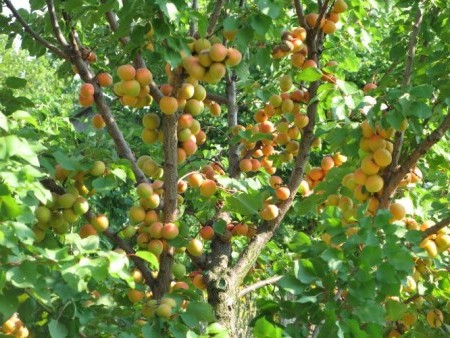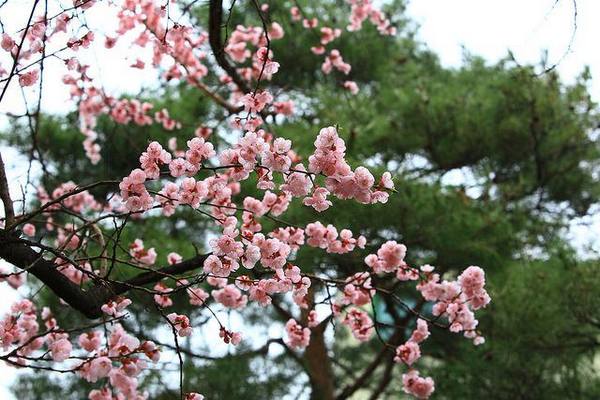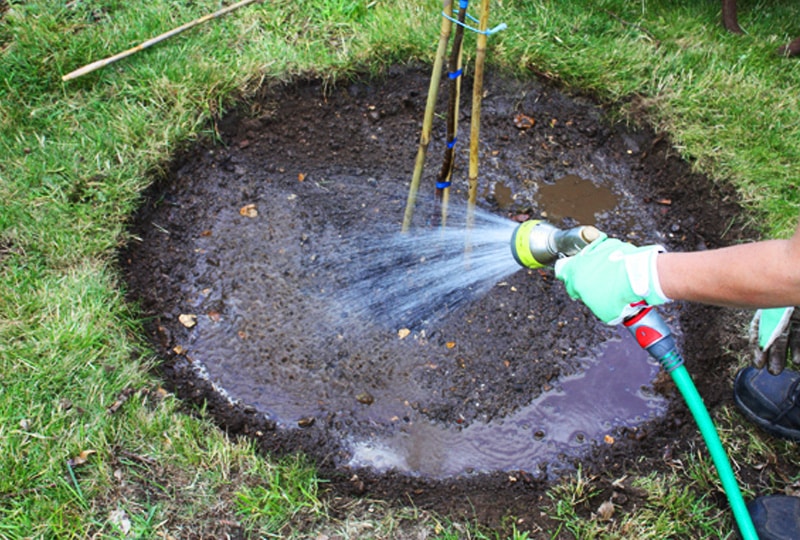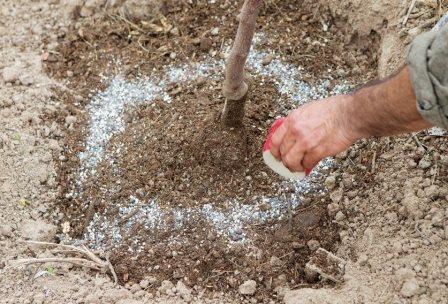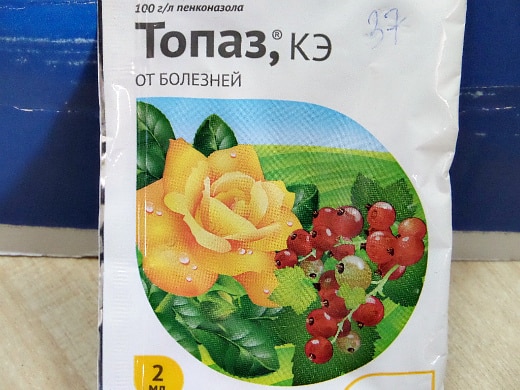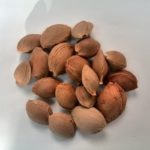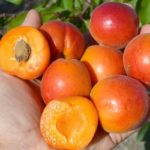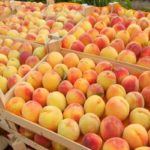Growing apricots in Siberia is a problematic activity. The Siberian climate is not suitable for cultivating this heat-loving crop, so it is not always possible to grow a tree the first time. But if you make every effort, growing an apricot tree is quite possible.
Apricot variety for Siberia
Apricot varieties for Siberia:
- One of the best varieties for growing in Siberia is the Sayan hybrid. The tree is undersized, growing no more than 3 m in height. The flowering period begins in May.Up to 15 kg of fruits are collected from one mature tree. The weight of the berry is 20 g.
- Mountain Abakan is a low-growing variety, reaching a height of about 3 m. The main advantage of the variety is frost resistance. The berries weigh from 20 to 35 g. The skin is orange in color with a slight red blush.
- Another universal apricot variety for growing in Siberia is Northern Lights. A self-sterile hybrid; pollinating plants are planted nearby to pollinate the inflorescences. The tree is compact and low. Fruits weighing 20-35 g. Up to 20 kg of crop is harvested from an adult plant.
- East Siberian is an early variety, flowering begins in the first half of May. Apricots ripen in the second ten days of July. Productivity from 10 to 15 kg.
There are not many varieties of apricots for growing in the Siberian regions. Due to climatic conditions, growing an apricot tree is quite problematic.
Choosing a landing site
Find a place in Siberia apricot planting more difficult than in the south due to the climate. It is recommended to plant apricot trees in partial shade, in areas sheltered from cold winds. It is undesirable to plant trees in the sun because in the spring the buds will begin to swell early, and they will die when spring frosts return.
It is not advisable to plant seedlings in lowlands where water accumulates. Plants are undemanding to soil composition and can grow on any type of soil.
Plants prefer to grow on loose, fertile soils. If the soil is infertile, then more fertilizer should be added to it before planting the seedling.
Landing technology
Planting apricots in Siberia is not much different from planting seedlings in other regions. Apricots are heat-loving plants that rarely survive frosty winters.Therefore, whether the tree will freeze in winter or not depends on the correct technique for planting seedlings.
Planting apricots in Siberia:
- Dig a hole at least 50 cm deep, the width of the hole should also be at least 50 cm and no more than 80 cm.
- The pit is filled with manure, superphosphate, and potassium sulfate in a ratio of 10 l x 500 g x 500 g.
- Mix fertilizers with soil.
- Seedlings should be planted a few weeks after fertilizing so that the soil is saturated with useful substances.
- After 2-3 weeks the seedling is planted.
- The tree is placed in a hole, the roots are straightened and soil is added.
- The root collar is left on the surface 5 cm from the soil.
- Compact the soil around the trunk and water generously with warm water.
In Siberia, it is recommended to plant apricot seedlings in the spring with the onset of warm weather, when the threat of night frosts has passed. A stake is placed next to the young seedling and the trunk is tied to it. If the hole is in a lowland, then you need to make good drainage so that the water does not stagnate and the soil is not waterlogged.
Tree care
When growing apricots in the southern regions, they do not spend much time on care. But if you plant plants in Siberia, you will have to take a lot of care for the tree. Since northern latitudes are not suitable for cultivating the plant, you will always have to be on guard so that the tree does not die.
Watering and fertilizing
The frequency of watering apricots depends on a number of factors, which include:
- Age of the tree.
- Growing season.
- Climatic conditions.
- Soil structure.
Young trees need watering more than older ones. The first watering is carried out in April, when the shoots bloom. Apricots are watered a second time when the inflorescences bloom and at the end of this period.The third time - a few weeks before the fruits begin to ripen. And the last watering is carried out in October. Before watering, loosen the soil and remove all weeds.
Another important aspect in caring for apricot trees is the application of mineral and organic fertilizers. Apricots are fed in spring, summer and autumn.
In spring, the plant is fed with nitrogen-containing fertilizers, which promote growth. Such fertilizers are applied to the soil next to the trunk. The first time nitrogen is fed during flowering and the second time after flowering. In the last fertilizing, organic matter is also added along with nitrogen. In summer, preference is given to foliar feeding. In summer, plants also require nitrogen. The leaves are sprayed with nitrogen-containing fertilizers.
With the onset of July, fertilizing should be comprehensive. And in August, preference should be given to organic matter.
In the fall, fertilizing is aimed at preparing for winter. In the autumn, mineral fertilizers are applied. In order for the apricot to survive the harsh winter, phosphorus, potassium and calcium are added to the soil in smaller quantities. To saturate the soil with potassium and phosphorus, the soil around the trunk is covered with wood ash. To saturate the soil with calcium, chalk or special complex fertilizers are used. It is not recommended to apply nitrogen-containing fertilizers, as they promote growth activation.
Apricot diseases and pests and their control
Fungal diseases are considered common apricot diseases:
- Cytosporosis of stone fruits. It is necessary to trim dry branches in a timely manner; at an early stage of the disease, the plants are sprayed with a solution of Bordeaux mixture or copper-containing chemicals.
- Bacterial necrosis. At the first signs of disease, damaged branches are removed and burned.The sections are treated with a solution of copper sulfate. As a preventive measure, every spring it is sprayed with a solution of Bordeaux mixture.
- Monilial burn. To prevent the development of the disease, remove dried fruits in a timely manner. When the buds begin to swell, the trees are treated with a solution of Bordeaux mixture. At the first sign of a burn, apricots are treated with Strobi or Topaz.
Pests of apricot trees include aphids, codling moths and leaf rollers. Spraying apricots with a soap solution helps against insects. In addition, the drugs “Chlorophos”, “Fitoverm” and “Entobacterin” are effective. As a preventive measure, every year in the fall after harvesting, the soil around the trunks is dug up and weeds are removed.
Growing apricot from seed
To grow seedlings with seeds, you need to take only seeds from a healthy and productive tree. Before planting, the seeds are washed under water and soaked in water. Then they are dried and left in this form until spring.
With the onset of spring, the bones are soaked in water for a week. The water is changed periodically. The bones are then placed in damp moss or sawdust. The temperature in the room where the seeds are located should be from +4 to +12 degrees.
When growing apricots in Siberia, they take time to stratify. This stage takes 1-3 months. After the seed bursts and sprouts appear, they are planted in the soil outside. The sprouts are planted to a depth of 5-6 cm. If you care for the sprouts correctly, then after a year they are planted in a permanent place. Growing an apricot from a seed takes from 1 to 3 years.

